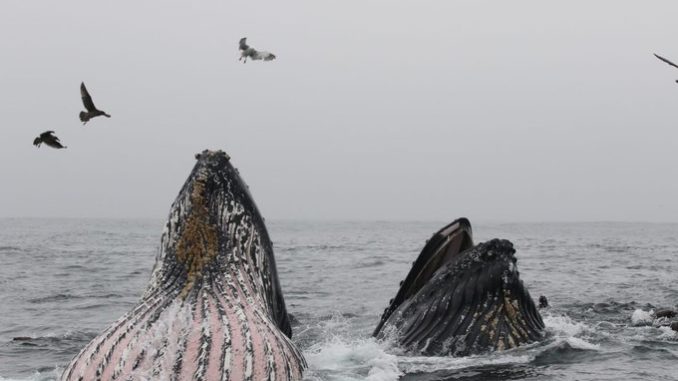
Is your iPhone whale-safe? Smartphones, like many consumer products, arrive in the US on giant container ships, vessels that are leading killers of endangered whales that play crucial roles in the climate and ocean health. Now a high-tech initiative called Whale Safe is detecting the huge marine mammals off the coast of San Francisco and alerting ship captains to slow down to avoid deadly collisions.
Launched on Wednesday, Whale Safe aims to create “school zones” for imperiled blue whales, fin whales and humpback whales in busy shipping lanes, according to the project’s managers at the Benioff Ocean Science Laboratory at the University of California at Santa Barbara and at the Bay Area’s Marine Mammal Center. Speeders are caught by satellite surveillance and cited online. That gives consumers the opportunity to see, for instance, if that cruise they’re contemplating is operated by a company with a history of ignoring sea speed limits. In the future, Whale Safe might award a label to retailers who sell products transported on ships that brake for cetaceans.
“No one wins when a ship comes into a port with an endangered whale wrapped around its bow right below the brand name of the company,” says Douglas McCauley, director of the Benioff Ocean Science Laboratory. “The phone that I’m talking to you on now has a connection to cargo ships that I think is underappreciated. There is a consumer connection to whale conservation here.”
Weighing 160 tons, blue whales are the largest animals that have ever lived, but they’re no match for a 200,000-ton cargo ship. California is home to three of the nation’s busiest ports and a hotspot for ship-related whale deaths. Scientists estimate that more than 80 endangered whales are killed annually by ship strikes off the West Coast, though only 5% to 17% of carcasses are recovered as most sink to the ocean floor.
